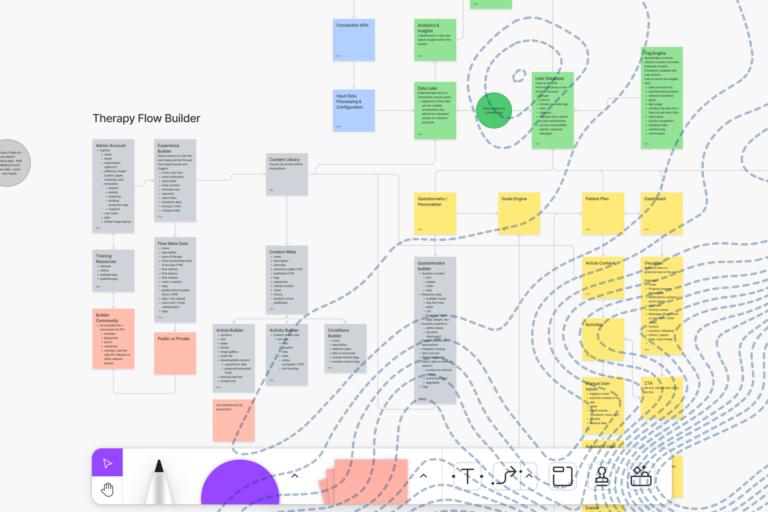What do we mean when we say “innovation”? And how do we measure the results? Tough questions, to be sure. But in the world of healthcare, having good answers for these questions is absolutely critical to ensuring that costly and time-consuming innovation initiatives actually drive meaningful change.
Download our Online Appointment Scheduling: Key Insights from Digital Health Leaders white paper
Unfortunately, with so much attention on the consumer healthtech market and flash over substance, that hasn’t always been the case.
“Innovation” has always been a nebulous term, influenced by both technological advances and cultural trends. As both of these factors continually shift at a rapidly increasing pace, our expectations for innovation – and therefore our approach to the process – must change significantly as well.
Not so long ago, innovation was the purview of mysterious innovation oracles toiling in much-hyped innovation and R&D departments, while the rest of the company focused on keeping the daily operations chugging along.
Now, thankfully, it’s rare to find a company that doesn’t foster a culture of innovation. But like any growing and evolving process, it’s easy to let the excitement of flashy new things distract us from our original purpose. As we prepare to hash out our strategic plans for the upcoming year, it’s important to revisit the fundamental question: “What is the goal for our innovation program?”
The Goal of Healthcare Innovation
Charting the use of the word “innovation” over the last few decades reveals an entertaining evolution from a revolutionary business concept to a frequently misused buzzword. It was quickly joined by the word “disruptive,” which first started appearing in the late 90’s, saw a big spike around 2010 and quickly became a required keyword in every TED talk description.
The reason is perfectly clear: “disruptive innovators” were dominating markets left and right, while incumbent behemoths fell victim to their own “why fix what ain’t broke?” mentality. In some markets (smartphones, retail, content) this led to rapid progress and world-changing advances. In others (online shopping, telecom, social media) it created dangerous bubbles that exploded when the shiny veneer wore off.
What we’re seeing today is the next stage: we’re maturing into sophisticated innovators. The novelty of flashy innovation has long worn off and we’ve come to terms with the fact that innovation itself is not a goal. You need to show the receipts.
We’ve seen enough innovative business models crumble to recognize that the flash doesn’t always translate to results. The reaction has been a much-needed refocusing on designing objective, measurable parameters for what successful innovation means.
We’re also seeing a slight but significant shift in the term’s core definition. What started out as “the process of translating an idea or invention into a good/service that creates value for which customers will pay,” has progressed over time into “translating an idea into a good/service that drives change.”
This shift is especially evident in healthcare, an industry that was founded on compassion, caring, and a drive to help others live better lives.
From an innovators’ perspective, we’re responsible for moving the discussion from “can we make it?” to “how is it helping patients?” We’re elevating our milestones for success from revenue-focused goals to more patient-centric objectives, like reducing hospital readmission rates, improving medication adherence and providing more nimble and personalized care across patient populations.
Most importantly, we’re seeing our industry come together to re-establish a fundamental truth: the goal of any innovation program is to make healthcare better for patients.
Perhaps the most exciting part of this shift is that industry executives are rapidly getting on board, eliminating a major obstacle for many healthcare organizations. A 2017 AHA and AVIA survey of more than 300 health system CEOs and innovation leaders reported, “While innovation definitions still vary, leaders are almost universally aligned around the importance of digital innovation…Leadership buy-in is no longer a barrier…”
We’re already seeing the benefits of this executive buy-in. Leading organizations like the Mayo Center and Penn Medicine have made significant investments in healthcare innovation centers. These institutions, among many others worldwide, are embracing the patient-focused approach and integrating human-centered design and co-creation into their innovation programs. This model goes beyond just soliciting more patient feedback during the development process. Patients are recruited as collaborators and co-designers, becoming increasingly more involved in their own and collective health outcomes.
While collaborative programs like these face their own unique challenges, they are already demonstrating their value in humanizing healthcare innovation and transforming the delivery and experience of healthcare.
Are Your Innovative Solutions Making Healthcare Better?
Defining success metrics for your healthcare innovation center goes well beyond the scope of a single blog post. But if you’re examining the key question, “Are we making healthcare better for patients?” there’s a simple but effective gut check.
Find the story.
At its most basic, innovation is a three-step process:
- Capture & Evaluate New Ideas
- Develop Products & Services
- Bring Them to Market
Within these three steps are a million different ways to get sidetracked by the details and lose sight of that North Star: “Is this meaningful for patients?” In our own experience building innovative healthcare solutions, we’ve discovered that one of the easiest way to determine if your product will be meaningful is to look at the story from the patient’s point of view.
If you can create an engaging story of how a patient’s life has or will improve because of what you’re creating, your innovations will drive meaningful change. As an added bonus, this storytelling approach can help ensure your innovation team continues to consider and build for measurable, patient-driven outcomes as healthcare continues to shift to a value-based system.
Sign up for HealthWire to get the latest health tech headlines delivered to your inbox
Your patient story doesn’t have to grab front-page headlines. It doesn’t have to turn the world on its ear. As experienced innovators, we know that while the flash and fireworks may be fun and exciting, it’s the quiet achievements – the day-to-day improvements of care delivery, the growing empowerment of every patient – that revolutionize the long-term landscape of healthcare.



